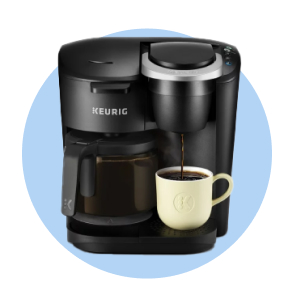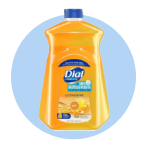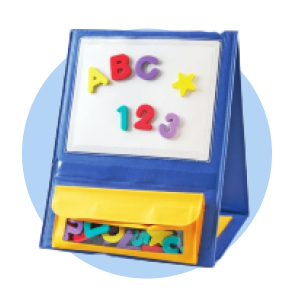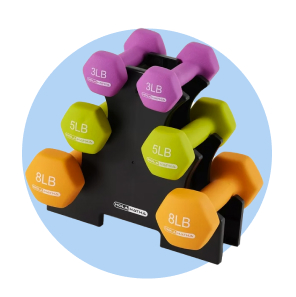
Guest Attraction: 5 Strategies for Hotel Owners During High Inflation
Raising occupancy can keep revenue stable
After decades of nearly uninterrupted growth, tourism hit a wall in 2020 thanks to quarantine-induced travel restrictions. Recovery began in 2022, but it’s been slow going. Europe and North America only just returned to 2019 levels of tourism in 2024. Numbers are up, but so is inflation, and hotels are looking for ways to keep their cash flow healthy.
Keeping hotel profits positive demands some outside-the-box thinking. Mix and match these tactics to find a combination that keeps your rooms full and your books in the black.

5 ways to bring in guests & keep them coming back
1. Partnership marketing
Your local area is full of businesses targeting the same clientele as your hotel. These restaurants, museums, galleries and tour companies all depend on tourists to thrive. Those tourists need somewhere to stay. Why not have your local business network funnel them to you?
When a local business suggests your hotel to clients, it feels more authentic than online ratings. In return, you can recommend those businesses to your guests. Everyone wins: customers are assured great service, and both businesses get an influx of fresh faces.
As useful as these mutual recommendations are, they only scratch the surface of what partnership marketing can achieve. Local partnerships are also a powerful way to expand your hotel’s offerings.
For example, say your hotel doesn’t have a sauna, but the spa in town does. If you negotiate a partnership with your fellow local business, you may be able to offer reduced rates for your guests. Sweeten the deal even further by packaging those rates along with your own offerings. (More on packages later.)
2. Social media marketing
If you’re looking to attract guests from farther afield, social media marketing is a highly effective way to do it. More than 80% of Americans use social media, and it has a huge effect on their travel habits.
As short-form video platforms such as TikTok have gained popularity, they’ve brought a passion for travel to millions of people. In fact, 35% of American TikTok users say they have traveled to a new destination after seeing a TikTok about it.
Establishing your hotel on social media can help you tap into that trend. Start by identifying which platforms your guests are most likely to use. TikTok and Facebook, for example, have very different demographic makeups.
Users aged 18-24 make up 39% of TikTok’s base. Facebook skews older, with 43.2% of users aged 25-44. Choose the platform that makes the most sense for your business and start to build out your presence with high-quality photos and videos of your amenities.
70% of consumers prefer to avoid advertising altogether—unless they’re hearing from a brand they trust. To develop that trust, try to cultivate a personal, behind-the-scenes feel in your videos. Even better, scour your chosen platforms for photos and videos taken by your guests. This user-generated content (UGC) represents social proof that your hotel is the right choice for potential guests.
You can expand your reach even further using paid ads on your social media platform of choice. With traditional ads, you pay the same amount no matter how well (or poorly) your ad performs. Social media ads use a different model, in which you pay based on the results of your ad. That performance marketing model helps you to keep spending efficient.
Social media ads also allow for precise targeting of demographics, location and other variables. Using those levers makes your ads much more likely to land in front of customers likely to convert.
While your ads run, you can monitor how effective they are in real time. If one campaign is working, you can reinvest for even more returns. If another isn’t, you can scale it back. Over time, you can refine your spending efficiency to maximize your return on investment (ROI).
3. Dynamic pricing
Guests naturally want the lowest rates they can get, but you still need to turn a profit. With dynamic pricing, you can find that balance between happy guests and a healthy profit margin more easily.
Dynamic pricing allows you to adjust your rates based on your ever-changing supply and current demand. You’re likely already doing this on a seasonal basis, with peak-season rooms sporting a higher rate than off-season ones.
Supply and demand for your rooms shift constantly, even over the course of a single day. Tons of variables affect it: weather, local events and trends in customer behavior to name just a few. If you only adjust rates a few times a year, you’re likely leaving rooms empty in lean times and profit on the table in flush ones.
With dynamic pricing, you can change your rates to fit real-world market conditions. If demand is low, your rates can downshift to attract guests. When demand rises, your rates can rise with it. This kind of agility helps mitigate the lows of your financial calendar and double down on the highs.
Manually adjusting prices in real time can create a lot of work for a revenue manager, so many hotels that opt for dynamic pricing invest in software to support it. These solutions examine a wide range of factors before determining the right rate for a room. You can let them set that rate automatically or have an employee approve and apply it.
4. Value-added packages
If your hotel offers amenities beyond lodging, value-added packages are a cost-effective way to raise your revenue per guest. By bundling services like massages with a stay, you can charge more than your best available rate (BAR) while keeping your overhead low.
Value-added packages let you highlight what makes your hotel special. Got a stunning rooftop view? Cuisine from nearby farms? Leveraging those advantages with a package can make your hotel more attractive than its competitors.
You can join forces with your local business partners to make both your offerings more tantalizing. For example, after guests enjoy an afternoon tasting at your vineyard, they might head to a restaurant in town and enjoy your wines alongside an elegant dinner at a discounted price.
Getting more guests to use these services improves their experience at your hotel. The more exciting their stay, the more likely they are to return—and to tell their friends.
Offering high-value packages during the off-season or on weekdays can help you win occupancy you might not ordinarily see. Plus, knowing in advance what services your guests will use makes it easier to plan schedules and inventory. More accurate planning means more efficient resource management.
5. Loyalty programs
Acquiring new customers is critical for any business, but it’s also expensive. Research shows that new customer acquisition costs up to 25 times more than retaining existing customers. You can see significant returns by investing in measures to keep your clientele coming back.
One tried-and-true method for retaining customers is implementing loyalty programs. Customers who join a company’s loyalty program are 59% more likely to choose that company over a competitor. They’re also 62% more likely to spend more.
Every loyalty program is unique, but many of the most successful programs have a few things in common. As you design your loyalty program, make sure it’s easy to join and simple to use, as that encourages customers to participate over and over.
Consider offering your loyal customers exclusive benefits. Members-only perks and opportunities promote a sense of exclusivity, which in turn can drive social media engagement and word of mouth.
Finally, regularly check in on feedback from your guests to refine the program over time. Sending surveys to guests who sign up for the loyalty program is useful, but so is asking those who don’t. Learning why they didn’t can point out a problem with your program you didn’t realize existed.

Stay supplied for less with Walmart Business
Looking for more ways to keep your business cost-effective? Try Walmart Business. You can browse hundreds of products quickly using a hospitality industry-focused digital shop. With a free Walmart Business account, you can find furniture, cleaning supplies and more at affordable prices. Spend more than $35 on an order, and you can have it shipped for free.1
You can save even more with a Walmart Business+ membership. Purchases over $250 earn 2% back in Walmart Business Rewards that can go toward future purchases.2 Combine that with no-minimum free shipping3 and you can save up to $500 a year.4


Limited-time offer
Unlock your special promo code
Stay informed on Walmart Business news & get $20 off a $100 purchase!1
1Minimum order of $100. Promo code can be used one time & may not be combined with other offers. Offer not transferable & void where prohibited by law. Customer responsible for all applicable taxes. Offer expires 12/31/2025 at 11:59pm PT. Further restrictions apply. See terms at checkout for details. Promo code offers available in limited quantities. While supplies last.
1 Excludes most Marketplace items, freight and certain location surcharges.
2 Rewards can only be used toward future purchases on Walmart Business. Additional terms apply.
3 Excludes most Marketplace items, freight and certain location surcharges.
4 Savings based on 1 free $35+ delivery order vs. $9.95 fee and 1 free shipping order under $35 vs. $6.99 fee biweekly, plus 2% Walmart Business Rewards on monthly order >$250 (average value of $400).
Exciting news awaits
Hear firsthand about new products, features & promotions.
By clicking submit, you agree to receive emails about Walmart Business and acknowledge you have read and agreed to our Terms of use and Privacy Policy.










